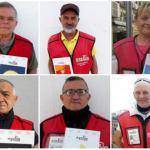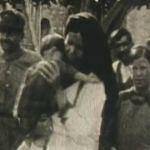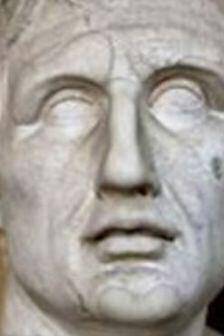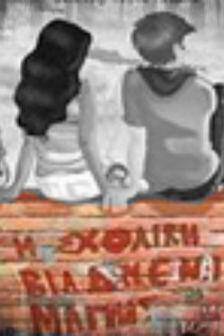Βιετνάμ: O πραγματικός πόλεμος– σε εικόνες
Πηγή: theguardian.com
Bodies of US paratroopers lie near a command post during the battle of An Ninh, 18 September 1965. The paratroopers, of the 1st Brigade, 101st Airborne Division, were hit by heavy fire from guerrillas that began as soon as the first elements of the unit landed. The dead and wounded were later evacuated to An Khe, where the 101st was based. The battle was one of the first of the war between major units of US forces and the Vietcong
Sunlight breaks through dense foliage around the town of Binh Gia as South Vietnamese troops, joined by US advisers, rest after a tense night of waiting in an ambush position for a Vietcong attack that did not come, January 1965
Life magazine photographer Larry Burrows (far left) struggles through elephant grass and the rotor wash of an American evacuation helicopter as he helps GIs carry a wounded soldier on a stretcher from the jungle to the chopper in Mimot, Cambodia on 4 May 1970. The evacuation came during the US incursion into Cambodia. Burrows was killed on 10 February 1971, along with the photographer who took this picture, Henri Huet, and two other photojournalists – Kent Potter of UPI and Keisaburo Shimamoto of Newsweek – when their helicopter was shot down over Laos
Medic Thomas Cole looks up with his one unbandaged eye as he treats wounded Staff Sergeant Harrison Pell during a firefight on 30 January 1966. The men belonged to the 1st Cavalry Division, which was engaged in a battle at An Thi in the central highlands against combined Vietcong and North Vietnamese forces. This photograph appeared on the cover of Life magazine on 11 February 1966. Photographer Henri Huet’s coverage of An Thi received the Robert Capa Gold Medal from the Overseas Press Club
A 1st Cavalry Division soldier throws a rice basket on to the flames as his unit sweeps through a village near Tam Ky, 350 miles north-east of Saigon, on 27 October 1967. A peasant woman had tried to salvage the basket from the burning house, but US troops were intent on destroying anything that might be of value to the Vietcong
GIs of the 3rd Brigade, 101st Airborne Division, launch into a rock session while surrounded by symbols of the war: wooden bunkers, helicopter and sandbags, in July 1970. The soldiers were dug in at Firebase Kathryn on a hill south of the DMZ
Under sniper fire, a Vietnamese woman carries a child to safety as US marines storm the village of My Son, near Da Nang, searching for Vietcong insurgents, 25 April 1965. As was typical in such situations, the men of the village had mostly disappeared, and the remaining villagers revealed little when questioned
A US paratrooper, wounded in the battle for Hamburger Hill, grimaces in pain as he awaits medical evacuation at base camp near the Laotian border on 19 May 1969
Caught in a sudden monsoon rain, part of a company of about 130 South Vietnamese soldiers moves downriver in sampans during a dawn attack on a Vietcong camp on 10 January 1966. Several guerrillas were reported killed or wounded in the action 13 miles northeast of Can Tho, in the flooded Mekong Delta
US paratroopers of the 2nd Battalion, 173rd Airborne Brigade, hold their automatic weapons above water as they cross a river in the rain during a search for Vietcong positions in the jungle area of Ben Cat on 25 September 1965. The paratroopers had been combing the area for 12 days with no enemy contact
Hovering US Army helicopters pour machine-gun fire into the tree line to cover the advance of South Vietnamese ground troops as they attack a Vietcong camp 18 miles north of Tay Ninh, near the Cambodian border, in March 1965
A 6ft 5in machine gunner with the US 9th Infantry Division is submerged except for his rifle as he crosses a muddy stream in the Mekong delta south of Saigon on 10 September 1968
Severely burned in an aerial napalm attack, children run screaming for help down Route 1 near Trang Bang, followed by soldiers of the South Vietnamese army’s 25th Division, on 8 June 1972. A South Vietnamese plane seeking Vietcong hiding places accidentally dropped its flaming napalm on civilians and government troops instead. Nine-year-old Kim Phuc had ripped off her burning clothes while fleeing. This photograph by Nick Ut received the 1973 Pulitzer prize for spot news photography
In the first of a series of self-immolations by Buddhist monks, Thich Quang Duc burns himself to death on a Saigon street to protest persecution of Buddhists by the South Vietnamese government on 11 June 1963. The photograph aroused worldwide outrage and hastened the end of the Ngo Dinh Diem government. With the photograph on his Oval Office desk, President Kennedy remarked to his ambassador: “We’re going to have to do something about that regime.”
Marines transport their seriously wounded atop a US army tank through the streets of Hue toward a helicopter evacuation point on 17 February 1968. Tanks were the only vehicles able to travel the streets because of rubble from buildings destroyed during the still-ongoing Tet offensive. The marines came under sniper fire several times on the journey
Buddhist monks and women pull at a barbed-wire barricade that was set up in front of Saigon’s Giac Minh Pagoda to halt a demonstration on 17 July 1963. Police wielding clubs injured at least 50 people during the protest, one of many during this period by Buddhists opposed to the Diem regime. The following month, secret police raided temples throughout the country, an act that only heightened anger against the government
A woman mourns over the body of her husband after identifying him by his teeth and covering his head with her conical hat. The man’s body was found with 47 others in a mass grave near Hue on 11 April 1969. The victims were believed to be killed during the insurgent occupation of Hue as part of the Tet offensive
Gen Nguyen Ngoc Loan, South Vietnamese chief of the national police, fires his pistol into the head of suspected Vietcong official Nguyen Van Lem on a Saigon street early on in the Tet offensive, on 1 February 1968. Photographer Eddie Adams reported that after the shooting, Loan approached him and said: “They killed many of my people, and yours too,” then walked away. This photograph received the 1969 Pulitzer prize for spot news photography
Exhausted South Vietnamese soldiers sleep on a US Navy troop carrier taking them back to the provincial capital of Ca Mau in August 1962. The infantry unit had been on a four-day operation against the Vietcong in swamplands at the southern tip of the country
A distraught father holds the body of his child as South Vietnamese rangers look down from their armoured vehicle on 19 March 1964. The child was killed as government forces pursued guerrillas into a village near the Cambodian border. From the portfolio by AP photographer Horst Faas that received the 1965 Pulitzer prize for photography
The body of a US paratrooper killed in action in the jungle near the Cambodian border is lifted up to an evacuation helicopter in war zone C on 14 May 1966. The zone, encompassing the city of Tay Ninh and the surrounding area north of Saigon, was the site of the Vietcong’s headquarters in South Vietnam
As fellow troopers aid wounded comrades, a paratrooper of A Company, 101st Airborne Division, guides a medevac helicopter through the jungle foliage to pick up casualties suffered during a five-day patrol near Hue in April 1968
Marines emerge from their foxholes south of the DMZ after a third night of fighting against North Vietnamese troops in September 1966. The helicopter on the left was shot down when it came in to resupply the unit
Women and children crouch in a muddy canal as they take cover from intense Vietcong fire on 1 January 1966. Paratroopers of the 173rd Airborne Brigade (background) escorted the civilians through a series of firefights during the US assault on a Vietcong stronghold at Bao Trai, about 20 miles west of Saigon
Actor Carroll Baker snaps her fingers at sailors cheering from the bridge as Bob Hope leads her across a stage on the flight deck of the USS Ticonderoga in December 1965. More than 2,500 sailors saw the Hope troupe’s show aboard the aircraft carrier. The comedian included South Vietnam in his annual holiday-season visits to troops from 1964 to 1972
An unidentified US soldier wears a hand-lettered slogan on his helmet in June 1965. The soldier was serving with the 173rd Airborne Brigade on defence duty at the Phuoc Vinh airfield
A South Vietnamese stretcher-bearer wears a face mask to protect himself from the smell as he passes the bodies of US and South Vietnamese soldiers killed fighting the Vietcong in the Michelin rubber plantation, 27 November 1965. More than 100 bodies were recovered after the Vietcong overran South Vietnam’s 7th Regiment, 5th Division, killing most of the regiment and several US advisers. The plantation, situated midway between Saigon and the Cambodian border, was the scene of frequent fighting throughout the war
Photographer Huynh Thanh My, pinned down with a Vietnamese battalion in a Mekong Delta rice paddy on 13 October 1965, about a month before he was killed while covering combat. His younger brother, Nick Ut, later came to work for the AP as a photographer
AP photographer Horst Faas, with his cameras around his neck, accompanies US troops in war zone C































































